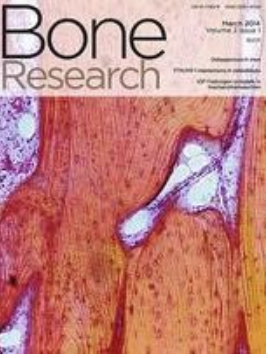What a pain in the back: etiology, diagnosis and future treatment directions for discogenic low back pain.
IF 15
1区 医学
Q1 CELL & TISSUE ENGINEERING
引用次数: 0
Abstract
Chronic lower back pain (LBP) is the leading cause of disability worldwide. Due to its close relationship with intervertebral disc (IVD) degeneration (IVDD), research has historically focused more on understanding the mechanism behind IVDD while clinical efforts prioritize pain management. More recently, there has been a shift toward understanding LBP as a distinct pathological entity. This review synthesizes current knowledge on discogenic LBP, combining known pathophysiology, molecular mechanisms, risk factors, diagnostic challenges, and available experimental models. IVDD is a complex, multifactorial process involving biochemical, mechanical, and inflammatory changes within the disc, leading to structural breakdown and potential discogenic pain. Key mechanisms include extracellular matrix degradation, upregulation of inflammatory mediators, immune cell infiltration, and aberrant nerve and vascular ingrowth. However, not all cases of IVDD result in LBP, highlighting the need for further investigation into the cellular, molecular, and biomechanical factors contributing to symptom development. Current diagnostic tools and experimental models for studying discogenic LBP remain limited, impeding the development of targeted treatments. Existing therapies primarily focus on symptom management rather than addressing underlying disease mechanisms.什么是背痛:椎间盘源性腰痛的病因、诊断和未来治疗方向。
慢性腰痛(LBP)是全球致残的主要原因。由于其与椎间盘退变(IVDD)密切相关,历史上的研究更多地集中在了解IVDD背后的机制,而临床工作优先考虑疼痛管理。最近,人们开始将腰痛理解为一种独特的病理实体。本文综合了目前关于椎间盘源性腰痛的知识,结合了已知的病理生理学、分子机制、危险因素、诊断挑战和现有的实验模型。IVDD是一个复杂的多因素过程,涉及椎间盘内的生化、机械和炎症变化,导致结构破坏和潜在的椎间盘源性疼痛。主要机制包括细胞外基质降解、炎症介质上调、免疫细胞浸润以及神经和血管的异常生长。然而,并不是所有的IVDD病例都会导致腰痛,因此需要进一步研究导致症状发展的细胞、分子和生物力学因素。目前用于研究盘源性腰痛的诊断工具和实验模型仍然有限,阻碍了靶向治疗的发展。现有的治疗方法主要侧重于症状管理,而不是解决潜在的疾病机制。
本文章由计算机程序翻译,如有差异,请以英文原文为准。
求助全文
约1分钟内获得全文
求助全文
来源期刊

Bone Research
CELL & TISSUE ENGINEERING-
CiteScore
20.00
自引率
4.70%
发文量
289
审稿时长
20 weeks
期刊介绍:
Established in 2013, Bone Research is a newly-founded English-language periodical that centers on the basic and clinical facets of bone biology, pathophysiology, and regeneration. It is dedicated to championing key findings emerging from both basic investigations and clinical research concerning bone-related topics. The journal's objective is to globally disseminate research in bone-related physiology, pathology, diseases, and treatment, contributing to the advancement of knowledge in this field.
 求助内容:
求助内容: 应助结果提醒方式:
应助结果提醒方式:


